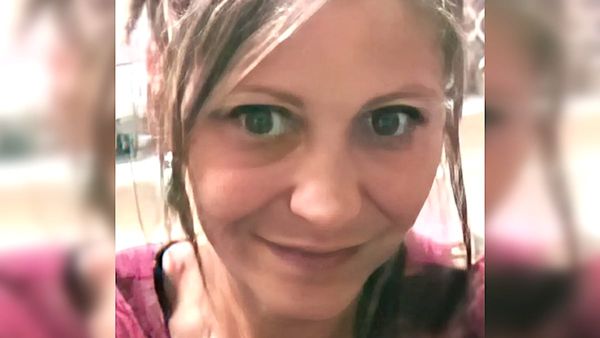Benjamin Kennedy, a PhD student in education at UC San Diego, remembers what it was like to attend school in California as a transgender student.
From kindergarten to his senior year of high school, Kennedy said he experienced bullying and physical assault when trying to use the bathrooms that aligned with his gender identity.
In 2021, Kennedy joined a state committee of high school students, parents, advocates and experts that explored how to expand gender-inclusive bathrooms on campuses.
"Trans people are not a monolith," Kennedy said. "But often our experiences of discrimination and harassment are pretty consistent across the board."
In the committee, students said they had been late to class going across campus to find a private bathroom. Others expressed worries about outing themselves by asking for the key to the single-use bathroom. Some talked about experiencing dehydration and urinary tract infections as a result of avoiding the restroom at school.
To address this, Sen. Josh Newman (D-Fullerton) has introduced SB 760, which would require public schools in California to provide gender-neutral bathrooms for students by 2025.
These restrooms are to remain unlocked during school hours and can be converted from an already existing gender-segregated bathroom, according to the bill text.
"At some point in everybody's day, you have to use the facilities," Newman said. "And if you're a transgender, nonbinary, or questioning young person, having to navigate that challenge — especially if you haven't come out to your friends or family — it creates an immense amount of stress, anxiety, and even physical pain."
The legislation builds on California's groundbreaking move a decade ago to require that schools allow students to use the bathroom that aligns with their gender identity instead of their assigned sex at birth. Since then, transgender issues have become a major front in national culture wars, with blue states pushing to expand rights and protections for transgender people and red states passing laws to limit them. Public schools are a frequent target of both the liberal and conservative laws.
Newman's bill would require schools to post signs identifying gender-neutral bathrooms, stock them with menstrual products, and provide easy access to them without help from staff. SB 760 does not specify if the restrooms should be designed for one person or with multiple stalls.
"Trans and nonbinary students are not asking for special treatment, " Kennedy said. "They deserve to be safe as their holistic selves at school, and a part of that is being able to use the bathroom just like everybody else."
The California law that requires schools let students use campus bathrooms in accordance with their gender identity does not require gender-neutral restrooms on campus, Newman said. The idea for a gender-neutral bathroom is that it would be available to any student, regardless of their gender identity.
"This bill will provide a safe space for students who identify as trans or nonbinary youth to not fear bullying or harassment, and to have better peace of mind when going to school," said Jorge Reyes Salinas, the communications director at Equality California, a co-sponsor of SB 760.
According to one survey, 45% of LGBTQ+ and nonbinary students avoid using gender-segregated bathrooms at school because they feel uncomfortable or unsafe. Another study found that youth who experienced bathroom discrimination were about 1½ times more likely to attempt suicide.
Joshua Dineros, a senior studying politics at the University of San Francisco, grew up in California and said he did not feel safe using the restroom during the school day. He came out as trans late in high school and was uncomfortable asking for the key to the gender-neutral bathroom. He brought up these concerns while a part of the state committee studying school bathrooms.
"It's not just an LGBTQ+ issue," Dineros said. "It's an issue about safe schools and bathrooms for all kids on campus to feel like they can use the restroom and not have to wait until they go home."
Some schools in California already offer the types of restrooms the bill would require.
In 2016, the Santee Education Complex became the first school in the Los Angeles Unified School District to open an all-gender bathroom.
But last year, a Long Beach high school paused a neutral locker room project after a small group of community members spoke out against it. And in March, Assemblymember Bill Essayli (R-Corona) introduced AB 1314, which would require California school districts to notify parents that their child is gender-nonconforming or transgender.
"We are seeing constant attacks against trans people, and especially trans youth in schools are becoming a battleground for political attacks," Salinas said.
Greg Burt, the director of California Family Council, a conservative Christian advocacy group, said he is in favor of SB 760 if the gender-neutral bathrooms are limited to single-stall restrooms. But the bill text isn't clear about that, Burt said.
"We are completely against multistall bathrooms that any sex can go into," he said. "Once you make the bathroom a place where anybody can go in, both male and female, you're making these bathrooms less safe. You don't want to put them in a space where they could start abusing each other."
Harmeet Dhillon, a Republican party official and San Francisco attorney whose clients include former President Trump, said schools should prioritize academics instead.
"Our state's failing schools need to focus on performing better in educating the two genders of kids rather than performative virtue signaling," she said in an email. "Girls are entitled to their own private spaces for safety and modesty reasons. If this passes, the gender-neutral bathrooms must not come at the expense of women's safety and privacy rights."
Newman said the bill was written with the presumption that the all-gender bathroom would be converted from a single-use restroom on campus. The aim is to provide private spaces to students without school districts needing to construct new buildings or spend too much, he said.
"We're not endeavoring to create a new category of bathroom that's shared-use by a whole bunch of people," Newman said. "What we're trying to do is solve a very specific problem and give a young person the privacy to relieve themselves."







